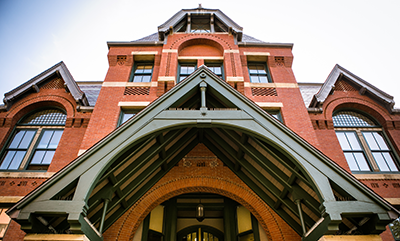On Responding to Unanticipated, Large-Scale Health Challenges.
 In the United Kingdom, last month’s Grenfell Tower fire demonstrated how political negligence and lack of preparedness can leave populations vulnerable to preventable hazard. Fears about materials used in the building’s construction were voiced as early as 1999, but political leaders did not take adequate steps to address the danger, likely opening the door to disaster. The fire stands as an example of how tragedy can follow when concerns about an unhealthy status quo go unheeded by the powerful.
In the United Kingdom, last month’s Grenfell Tower fire demonstrated how political negligence and lack of preparedness can leave populations vulnerable to preventable hazard. Fears about materials used in the building’s construction were voiced as early as 1999, but political leaders did not take adequate steps to address the danger, likely opening the door to disaster. The fire stands as an example of how tragedy can follow when concerns about an unhealthy status quo go unheeded by the powerful.
I have written recently about how the history of fire prevention suggests lessons for public health. Today, I will discuss how a lack of preparedness can undermine population health when large-scale health challenges strike, focusing on the area of pandemic preparedness.
We are not yet ready to face a global pandemic, or a similar disruptive, large-scale health challenge. In the US, the Trump administration has left many important public health posts unfilled, and the President’s willingness to cut funding for the National Institutes of Health (NIH) and the Centers for Disease Control and Prevention (CDC), among other important organizations, suggests a lack of appreciation for the role these agencies play in guarding against pandemic disease. Globally, there is a leadership vacuum in the area of pandemic preparedness, and countries collectively continue to struggle to develop a strategy that may guide a coordinated response to an inevitable large-scale outbreak.
What would such an outbreak look like? How might society respond? While this question is unanswerable, the past, as always, hints at a possible future. Some comments, then, on one of history’s most devastating population health events—the Black Death—drawing lessons from how people and institutions responded to the calamity, for better and for worse, as we prepare for the next large-scale health challenge.
In October 1347, a fleet of trading ships arrived in the port of Messina, Sicily, after traveling through the Black Sea. People who had gathered to meet the ships were soon shocked to discover that most of the sailors onboard were dead. Those who were not were horribly sick—feverish, and covered with unusual black boils that oozed blood and pus. The ships were quickly ordered out of the harbor, but by then it was too late. The Black Death had come to Europe.
Th
Europe was not prepared to cope with a threat like the Black Death. The disease claimed the lives of as many as 50 million people, about 60 percent of Europe’s total population at that time. In the beginning, economics drove the spread of plague, as merchant ships carrying infected rats brought the pestilence to port cities throughout the continent. The disease continued to spread, helped by urban overcrowding, poor sanitation, and unclean water. As the pandemic wore on, medieval society was upended. Doctors, afraid of infection, refused to treat patients, priests would not give last rites, businesses shuttered, and those who could fled cities for the countryside. Ignorance of the disease’s true origins only fueled the panic. Fear resulted in the persecution of marginalized groups, such as beggars, Jews, and foreigners.
The 14th century may seem far away. But I ground this note in such a distant event intentionally, as a simple reminder that what happened 700 years ago continues to happen to this day, when large-scale tragedies, for which we are unprepared, occur. Just as medieval institutions came up short in the face of the plague, health crises like the AIDS epidemic and natural disasters like Hurricane Katrina are just two examples where political negligence and incompetence worsened already terrible situations. These contemporary cases also highlighted how stigma can exacerbate the threat faced by marginalized populations in the same way that ignorance and fear caused groups to turn against each other during the years of the Black Death.
For all their horror, these stories challenge us to imagine a better world, and create opportunities to move in that direction. The Black Death so reduced the workforce that peasants were empowered to demand higher wages. Wage increases led, in turn, to better housing and diet for people at all levels of society, and a higher standard of living in some parts of Europe. If peasants were bold enough to fight for fairer wages and an improved standard of living during the turmoil of the plague years, surely we can be inspired to follow their example and prepare for the next outbreak by investing in the conditions that create truly resilient societies? We can do this in two ways.
First, by providing adequate funding for the agencies that safeguard population health. Simply put, we cannot have an adequate response to potential crises without a well-resourced health infrastructure. In the 14th century, Europeans were confronted with a disease that they did not understand, its origins mysterious. Our health agencies can help guard against a similar fate. The NIH, for example, supports key biomedical research, including vaccine development, while the CDC collaborates with partners, both in the US and around the world, to control emerging infectious threats. We need to support the mission of these agencies, not cut their budgets.
Se
I hope everyone has a terrific week. Until next week.
Warm regards,
Sandro
Sandro Galea, MD, DrPH
Dean and Robert A. Knox Professor
Boston University School of Public Health
Twitter: @sandrogalea
Acknowledgement: I am grateful to Eric DelGizzo for his contributions to this Dean’s Note and to Catherine Ettman for instigating it.
Previous Dean’s Notes are archived at: /sph/tag/deans-note/